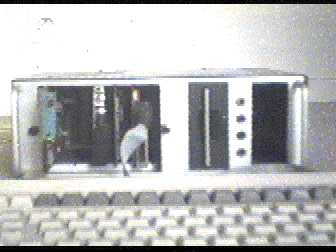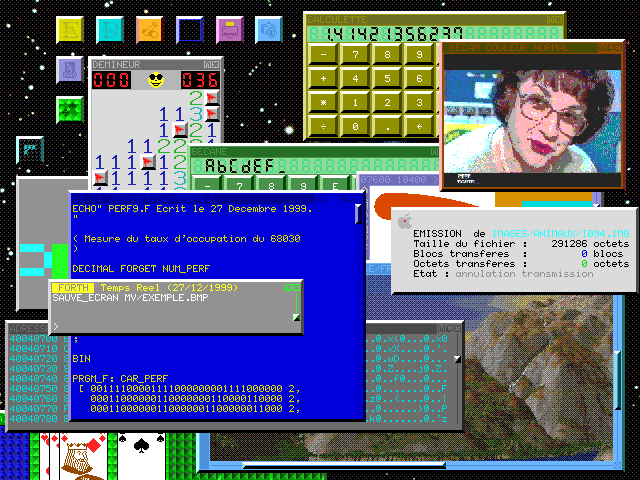Introduction
The ancestor of this system dates
the time in which it was necessary to spend a fortune to have
an information system of development deserving of this name (years
83/84). It was a question to have a tool of development for microcontrollers
of the family MOTOROLA (put into series MC680X for the specialists)
to realize "fiddle" electronics more original than eternal
audio amplifiers and other gradators published in the specialized
reviews.
This drove to the realization of a
system with MC6809's base containing a KiloOctets RAM board, a
compatible Péritel video board (a television acting as
video display) and a tape recorder interface to save various programs.
Basic software was contained in a 2 Koctet ROM(of type 2716 for
the same specialists) and contained mainly the management of the
screen (25 lines of 40 columns), a text editor and the routines
of serial connection for the tape recorder. First recorded software
was obviously the assembler 6809 then came the assemblers of the
microcontrollers and the various programs associated to various
applications.

Then, arrived the 3" 1/2 floppy
disk reader which allowed to save more easily data but by introducing
a difficulty: the necessity of having a files and repertoires
management software.
The assembly language, although very
effective to pull the maximum of performances of a some microprocessor,
showed himself fast little adapted for the development of more
and more complex software packages.
I asked then the following question:
which compiler of high-level language am I going to have to develop?
One spoke then at the time of a semi-compiled
language easily developping by a single person because, contrary
to assembler or other Pascal and C languages, compilation makes
only in a single pass without requiring the creation of a labels
table: the FORTH. The other enormous advantage at these times
when size memory was something relatively weak, the kernel including
the compiler and the interpretor could be contained in a space
lower than 16 KiloOctets! Knowing that a processor of type MC6809
can not administer directly more than 64 KiloOctets, this language
allows to have a complete information system in this space.
One thousand congratulations to Charles
MOORE who invented this fabulous language at the beginning of
the 70s!
This gave such a flexibility to the
system as it became there fast the main subject of "fiddle"
with evolution of the processor towards a MC68000 then a MC68030
and development of several interfaces as a graphics board VGA
640x480 (from which arise the screen views) and an SCSI interface
allowing the connection of a hard disk, a ZIP reader (goodbye
3"1/2 floppy disks) and even of a CDROM reader!
Example of an occupied
well desk:

Animation software for
3 dimensions objects:

Software of display of
the video lines (numbers 1 to 625 in SECAM or PAL and of 1 to
525 in NTSC):






